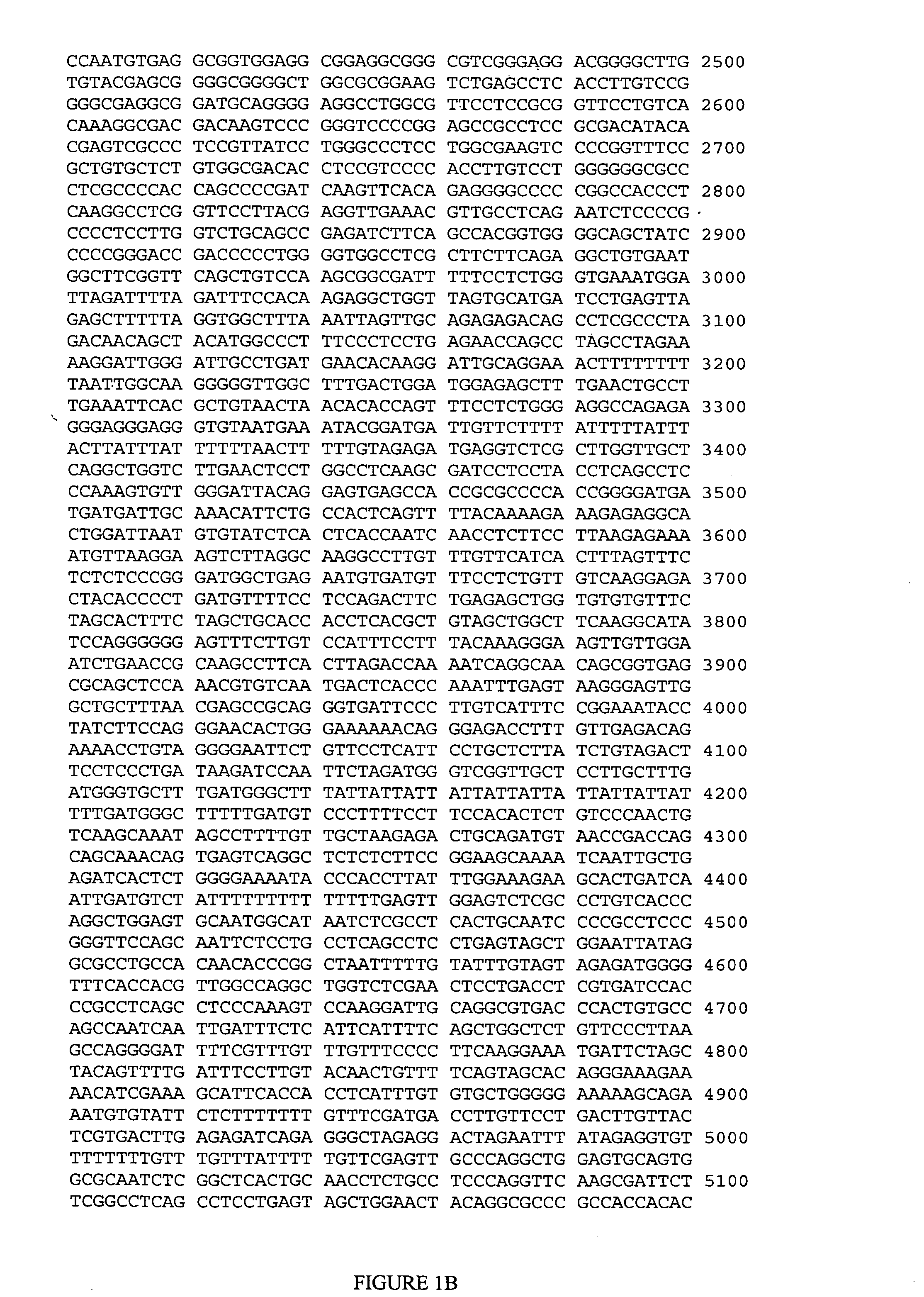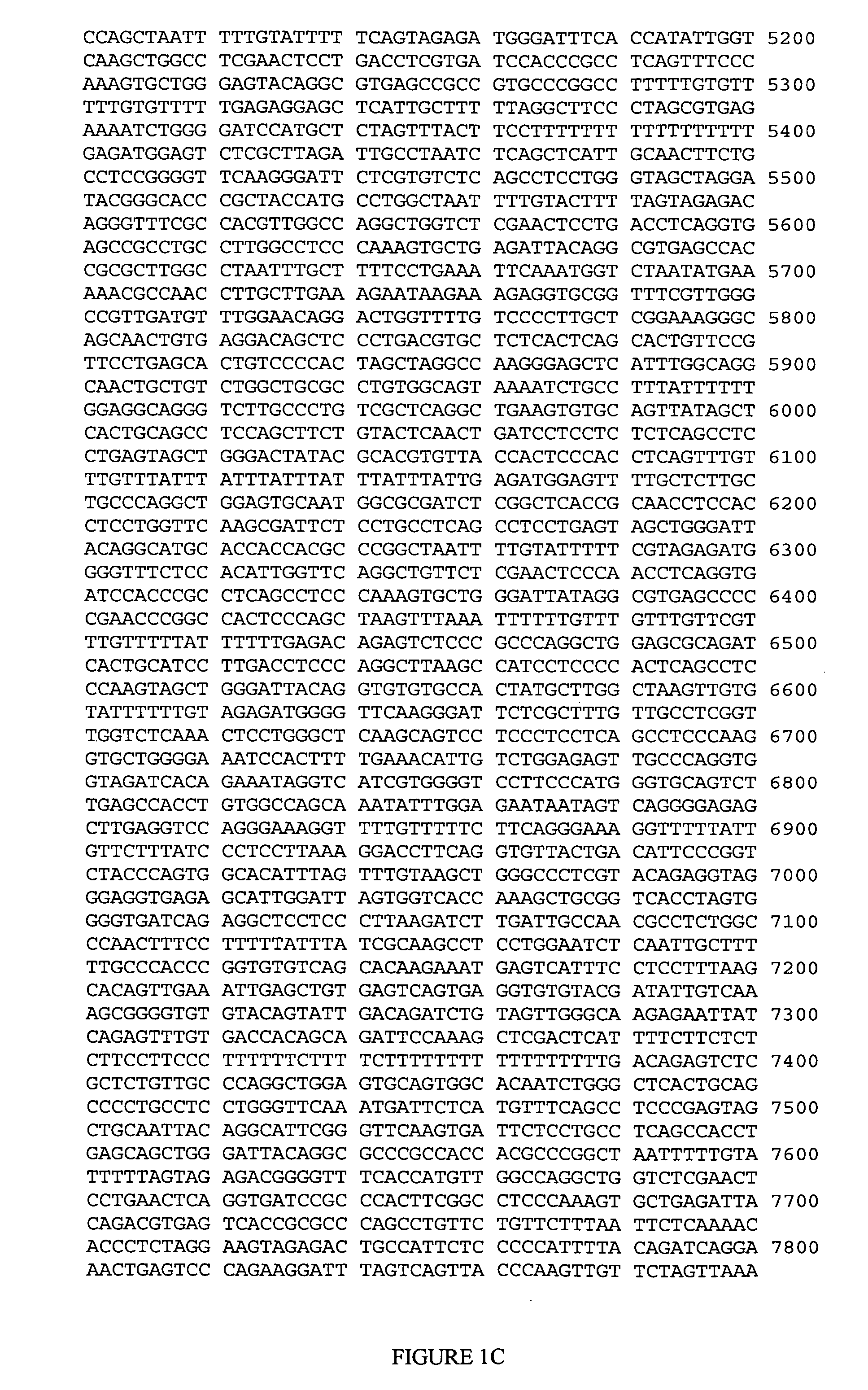LDLR genetic markers associated with age of onset of Alzheimer's Disease
a technology of genetic markers and alzheimer's disease, applied in the field of gene and pharmacogenomics, can solve the problems of increasing the pressure on health care professionals to diagnose, affecting the afflicted individual with additional time, and reducing the diagnostic accuracy of ldlr gene markers
- Summary
- Abstract
- Description
- Claims
- Application Information
AI Technical Summary
Benefits of technology
Problems solved by technology
Method used
Image
Examples
example 1
[0112] This example illustrates the clinical and biochemical characterization of selected individuals in a cohort of 449 Caucasian patients diagnosed with AD, each of whom had previously participated in a clinical trial of galantamine.
[0113] Genomic DNA samples were isolated from blood samples obtained from each member of the cohort and genotyped at each of PS1-PS14 (Table 2) using the MassARRAY technology licensed from Sequenom (San Diego, Calif.). In brief, this genotyping technology involves performing a homogeneous MassEXTEND assay (hME), in which an initial polymerase chain reaction is followed by an allele-specific oligonucleotide extension reaction in the same tube or plate well, and then detecting the extended oligonucleotide by MALDI-TOF mass spectrometry.
[0114] For each of the fourteen LDLR polymorphic sites of interest, a genomic DNA sample was amplified in a 8.0 μL multiplexed PCR reaction consisting of 2.5 ng genomic DNA (0.3 ng / μL), 0.85 mL 10× reaction buffer, 0.32 ...
example 2
[0120] This example illustrates the deduction of haplotypes from the LDLR genotyping data generated in Example 1.
[0121] Haplotypes were estimated from the unphased genotypes using a computer-implemented algorithm for assigning haplotypes to unrelated individuals in a population sample, essentially as described in WO 01 / 80156 (Genaissance Pharmaceuticals, Inc., New Haven, Conn.). In this method, haplotypes are assigned directly from individuals who are homozygous at all sites or heterozygous at no more than one of the variable sites. This list of haplotypes is then used to deconvolute the unphased genotypes in the remaining (multiply heterozygous) individuals.
[0122] A quality control analysis was performed on the deduced haplotypes, which included analysis of the frequencies of the haplotypes and individual SNPs therein for compliance with principles of Hardy-Weinberg equilibrium.
example 3
[0123] This example illustrates analysis of the LDLR haplotypes in Table 1 for association with individuals' age of onset of Alzheimer's Disease.
[0124] The statistical analyses compared age of onset of AD in individuals with one copy or two copies vs. zero copies, or zero copies or one copy vs. two copies (within an individual's genome) of a particular allele, using a logistic regression analysis on two-degrees of freedom to associate age of onset of AD with a particular haplotype. The following covariates were also included: gender, family history, and smoking.
[0125] For the results obtained on the analyses, adjustments were made for multiple comparisons, using a permutation test (Pesarin, Multivariate Permutation Tests: with Applications in Biostatistics, John Wiley and Sons, New York (2001)). In this test, a haplotype's data for each observation were kept constant, while all the remaining variables (outcome and covariates) were randomly permuted so that covariates always stayed...
PUM
| Property | Measurement | Unit |
|---|---|---|
| enzymatic nucleic acid cleavage assay | aaaaa | aaaaa |
| color | aaaaa | aaaaa |
| shape | aaaaa | aaaaa |
Abstract
Description
Claims
Application Information
 Login to View More
Login to View More - R&D
- Intellectual Property
- Life Sciences
- Materials
- Tech Scout
- Unparalleled Data Quality
- Higher Quality Content
- 60% Fewer Hallucinations
Browse by: Latest US Patents, China's latest patents, Technical Efficacy Thesaurus, Application Domain, Technology Topic, Popular Technical Reports.
© 2025 PatSnap. All rights reserved.Legal|Privacy policy|Modern Slavery Act Transparency Statement|Sitemap|About US| Contact US: help@patsnap.com



